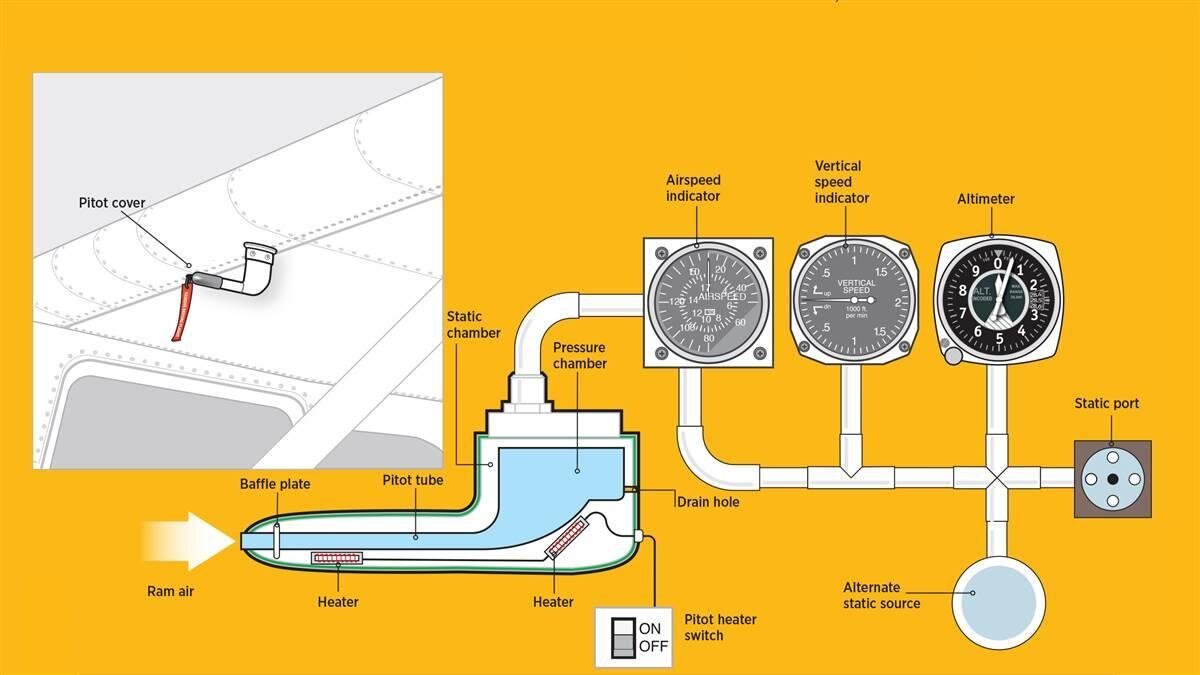Aircraft instruments are often part of a larger family or “system.” Today, we're taking a deeper look at one of the most important systems found on any aircraft, the pitot-static system.
The pitot-static system is made up of a number of sensors that detect the ambient air pressure affected (pitot pressure) and unaffected (static pressure) by the forward motion of the aircraft. These two different pressures are used on their own or in combination with each other to provide indications of vital flight parameters.

The Pitot-Satic System
First, we’ll take a closer look at the pitot tube, which uses ram air pressure (the air pressure that is ramming into the tube from the forward motion). Under ideal conditions, it is equal to stagnation pressure, also called total pressure. The pitot tube, which faces forward, is most often located on an aircraft's wing or front section. When airspeed increases, the ram air pressure is increased, which can be translated by the airspeed indicator.
The pitot-tube also has a heating element to protect the probe from ice accumulation. This is controlled by the pilot from the cockpit. It’s important to understand that if the pitot-tube becomes blocked, the pilot will lose accurate airspeed indications and the airspeed indicator acts like an altimeter. No other instrument in the system becomes affected other than the airspeed indicator.
Another important part of the system is the static port. Unlike the pitot tube, whose position allows for air to enter from the aircraft's forward motion, the static port is located in aerodynamically neutral points on the aircraft to allow for neutral air pressure measurements. This usually means the aircraft fuselage or some other neutral location. An alternative static port is often located inside the aircraft's cabin as a backup in case external static port(s) are blocked.
With these two types of sensors, the aircraft can now accurately translate parameters through vital instruments in the aircraft.
That includes:
Altitude (available on the Altimeter)
Airspeed (read off the Air Speed Indicator)
Mach Number (displayed on a Mach meter inside private and commercial jets)
Vertical speed (on the Vertical Speed Indicator)
The Pitot Static System is just one of many various parts we’ve begun to highlight in our latest Youtube Series. Take a closer look at the instruments and hear from our Captain as he walks you through the pitot-static system in under two minutes!

.png?width=178&height=50&name=Aviator%20Zone%20Academy%20(5).png)
Submit a Comment